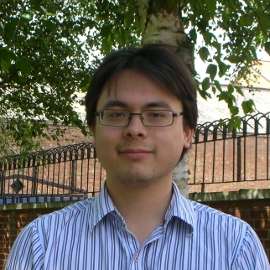An International Piano Series event, Karim Said’s recital this Sunday was also part of the Southbank Centre’s Berlin in the ’20s and ’30s weekend, a mini-series within the larger series (super-series, perhaps) which is the year-long Rest is Noise festival. He presented a short series of works by Arnold Schoenberg and his composition students Anton von Webern and Hanns Eisler. It was the second of a series of three recitals by Said focusing on Schoenberg.
Oh, and series are everywhere, by the way. Seriously. It’s just that the word has become strangely polemicised in music since Schoenberg’s invention of what is now called the “serialist” method in the 1920s. In the 90-odd years which have passed since then, musical serialism has been subjected to the most dazzling series of misinterpretations and misrepresentations, from both its advocates and its naysayers.
Even the “for” side is not united, and never has been: Theodor Adorno heard in serialism an authentic representation of the multifaceted and difficult truths of contemporary society, while Schoenberg himself found Adorno and his elevated, dense writings about him “pretentious”. Moreover, Schoenberg’s two most important serialist pupils, Webern and Alban Berg, both used the method in very different ways to Schoenberg himself – there has always been little consistency of approach among the pro-serialists. The “against” side, meanwhile, are also far from a united entity, and objections have ranged from the historical (was it really a necessity?), to the aesthetic (why doesn’t it sound like Brahms?), to the hysterical (why have you killed music?). One thing you can’t take away from serialism, clearly, is that it’s provocative.
In this maelstrom of competing convictions, it can be easy to forget that it’s surely best to judge music on what it sounds like, and this recital was a great – and pretty rare – chance to hear some important early serialist music live among interested and engaged spectators. Said’s performances, moreover, were exemplary – technically strong, detailed and thoughtful. Most of all, they were honest: fair reflections of these problematic works, warts and all; aggressive and expressionistic where necessary, calm and cryptic elsewhere, always allowing the music to speak.
It was just... too honest? It’s not a common criticism, but the problem here was that Said’s complete willingness to let these rather opaque works speak for themselves was at odds with the educative tone suggested by the brief, informative chats which we also heard between Said and presenter Sara Mohr-Pietsch. Their desire to explain this fascinating, worthwhile repertoire in words is of course understandable, but this is music which needs careful attention over a long period of time if it is to be usefully understood. Simply saying that a movement is a waltz, and then playing something that doesn’t sound like a waltz, can fast slip into unintentional self-ridicule.
After all, this is music which deliberately resists easy interpretation, music of a studied – codified, in fact – inscrutability. It is very much of its time, in its unflinchingly positive attitude towards intellectualism, and it flaunts its intellectual rigour by deliberately giving the listener very little to latch onto. But none of this is to say that Schoenberg’s serialist music isn’t worth the effort; it’s an engrossing, unique body of work, historically isolated now and all the more thrilling for it, and well worth getting to know.
Which is to say what should have been obvious all along: great art repays close study, no less with music than with anything else. And the more you get to know a work like Schoenberg’s Suite Op. 25, so impeccably realised here by Said, the better it gets, from the ambiguous, possibly even funny Musette in the third piece to the explosive final Gigue. That’s not to say that through prolonged exposure I’ve got used to this music: rather, what makes me return to it is the fact that I still don’t really understand how it works, or whether it works, or even whether I want it to. I am not sure there is any other music which poses so many questions as this.
On the other hand, the Eisler 4 Pieces Op. 3 were completely new to me, and a great discovery. Eisler injects a strong rhetorical thrust into these brief, exciting sketches, perfectly demonstrating the capacity of serialism to be visceral and action-packed when its composer wants it to be so. And this only made it clearer that Schoenberg’s music, that little bit less aurally giving than Eisler’s pieces, is meant to sound precisely as it does.
I am not a total serialist, so to speak. But this recital was an excellent demonstration of how this music does have a place in the repertoire, just like any other great music from the past, because of the brilliant, vivid stories it can tell. As for serialism’s legacy – well, we’ll have to wait until Said returns in June, when this particular series concludes.


